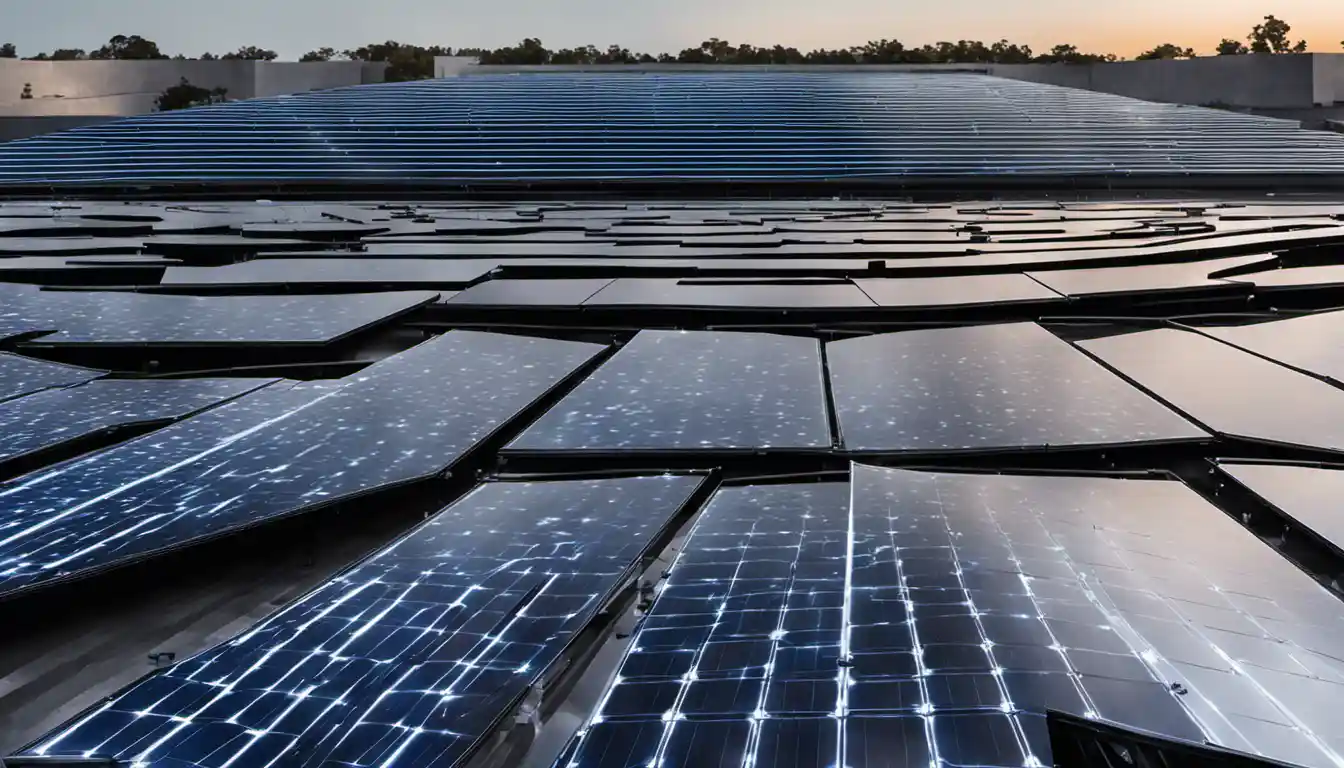Understanding Solar Energy
Active solar heating uses mechanical and electrical equipment to enhance the conversion of solar energy to heat and distribute this heat to the building, typically through fans, pumps, etc. In contrast, passive solar heating does not use any additional mechanical equipment, instead leveraging design techniques to naturally distribute solar energy, like certain building materials, strategic window placement, and distributing heat through natural convection.
What is Solar Energy?
At its core, solar energy is clean, renewable power harvested from the sun. It’s been a subject of intense study for scientists and a beacon of hope for environmentalists. It’s all around us, bathing our planet in rich, warm light every day. But how do we harness this abundant energy source for our daily needs? That’s where solar heating comes into play.
See also: What is Passive Solar Heating? Your Comprehensive Guide to Energy-Efficient Home Heating
Introduction to Solar Heating Systems
Solar energy, when used for heating, can significantly reduce the amount of traditional energy required to keep your home warm during those chilly months. There are two primary types of solar heating systems: active and passive. As a solar energy expert for my entire professional career, I’m here today to dive into “what is the difference between active and passive solar heating?”. Let’s get started by learning more about these systems.
See also: Pros and Cons of Passive Solar Heating: An In-depth Guide to Sustainable Living
What is Solar Heating?
Solar heating is a technology that converts sunlight into thermal energy, also known as heat. There are several ways to achieve this, and the separation of these paths gives birth to the concept of active and passive solar heating. For a more detailed breakdown of solar heating, check out our article “What Is Solar Heating“.
Deciphering Active and Passive Solar Energy
Before delving into the specifics, it’s crucial to understand that we are essentially splitting solar energy into two categories, Active and Passive, based on how the energy is captured, converted, and distributed.
Defining Active Solar Energy

When it’s about active solar energy, think along the lines of – you guessed it – activity! Active solar heating systems depend on external devices like solar collectors, pumps, and fans to move solar-heated water or air from the collection area to the area to be heated. For a more detailed read, head on over to our article about “What Is Active Solar Heating“.
Defining Passive Solar Energy
On the other flip of the coin, we have passive solar energy. Passive solar heating is more of a laissez-faire concept. There are no pumps, no fans, no external machinery. Instead, passive solar heating relies entirely on the design and materials of the building to collect, store, and distribute the heat from the sun.
Active vs. Passive Solar Heating
By now, you can surely paint a mental image about these two types of solar heating. However, the practical aspects of “what is the difference between active and passive solar heating” still deserve a spotlight.
What are Active and Passive Solar Heating?
Active solar heating employs mechanical and electrical devices to capture, store, and distribute heat, while passive solar heating uses the inherent properties of building materials and strategic design to meet the same ends. Like dancers swaying to different rhythms, active and passive solar heating systems follow different paths to a warm, cozy home, fuelled by solar energy.
Understanding the Main Differences between Active and Passive Solar Heating
-
Mechanical Devices: Active solar heating uses mechanical devices for heat transportation. In contrast, passive systems depend on natural heat flow.
-
Design Consideration – Active systems can be added to existing structures; passive systems generally need to be designed into a building from the start.
-
Reliability & Maintenance – Passive systems have fewer moving parts, so less can go wrong or need maintenance than in active systems.
-
Efficiency – As active systems deliver heat directly where it’s needed, they are typically more efficient than passive systems.
Practical Example of Active Solar Energy

Imagine a modern home fully equipped with solar panels, an electrical storage system, a heat pump, and a home automation system that optimizes the usage of solar energy when the sun is shining and stores excess energy for nighttime or overcast days.
Identifying Three Different Types of Active Solar Systems
- Solar Air Heat Systems: These systems heat the air directly and distribute it throughout the building.
- Solar Liquid Systems: In these systems, liquid (usually a type of antifreeze) is heated and used either for immediate heating or stored in tanks.
- Transpired Collectors: These are essentially a heated wall exposed to the sun which draws air into the house.
Check out the pros and cons of active solar heating for a more comprehensive guide.
In-Depth Look into Passive Solar Energy for Home Heating
Passive solar energy relies heavily on the architectural design of the building. Conceptually, it uses things like sun-facing windows to allow sunlight in and certain types of floors that hold onto that heat and distribute it as soon as the temperature drops.
Exploring Passive Solar Energy Design
Passive design involves altering and optimizing a building to take full advantage of the local climate and sun. It might involve installing large, south-facing windows; grouping living spaces on the sun-facing side of your home; using materials that store heat effectively, and designing overhangs for windows to prevent overheating in the summer months.
In-Depth Look into Active Solar Energy for Home Heating
How can active solar energy be precisely used for home heating? The key lies in the mechanical systems that move heated air or liquid to the parts of the house that require heat.
Exploring Active Solar Energy Design

The design of active solar heating systems often includes solar thermal collectors to absorb solar energy and convert it into usable heat. Other components include control systems to direct the heat to where it’s needed, and storage systems to hold excess heat for later use.
Recap and Summary on Active and Passive Solar Heating
So, “what is the difference between active and passive solar energy?” The difference lies in how these systems capture, convert, and distribute solar energy. Each has its unique benefits and potential downsides, based on your specific needs and circumstances.
Recap on Active Solar Energy and its Heating application
Active solar heating relies on mechanical devices to capture and transport heat. While it can often deliver a high heat output and operate in many weather conditions, it also requires a certain level of maintenance.
Recap on Passive Solar Energy and its Heating application
Passive solar heating requires thoughtful design but has few moving parts and thus, requires less maintenance and repairs over time. However, it might not achieve the same level of heating output as an active system.
Main Difference between Passive Solar Heating and Active Solar Heating Revisited
The main difference essentially boils down to the use of mechanical devices to capture, move, and distribute heat in an active system; and the reliance on the design of the building to perform the same functions passively.
In summary, understanding the factors that influence “active vs passive solar heating” can help you make the best decision for your home. You’re one step closer to making the world a greener place. Keep your eyes peeled for more in-depth articles about solar energy and remember, the sun is your friend. May it always shine brightly on your solar journey!



